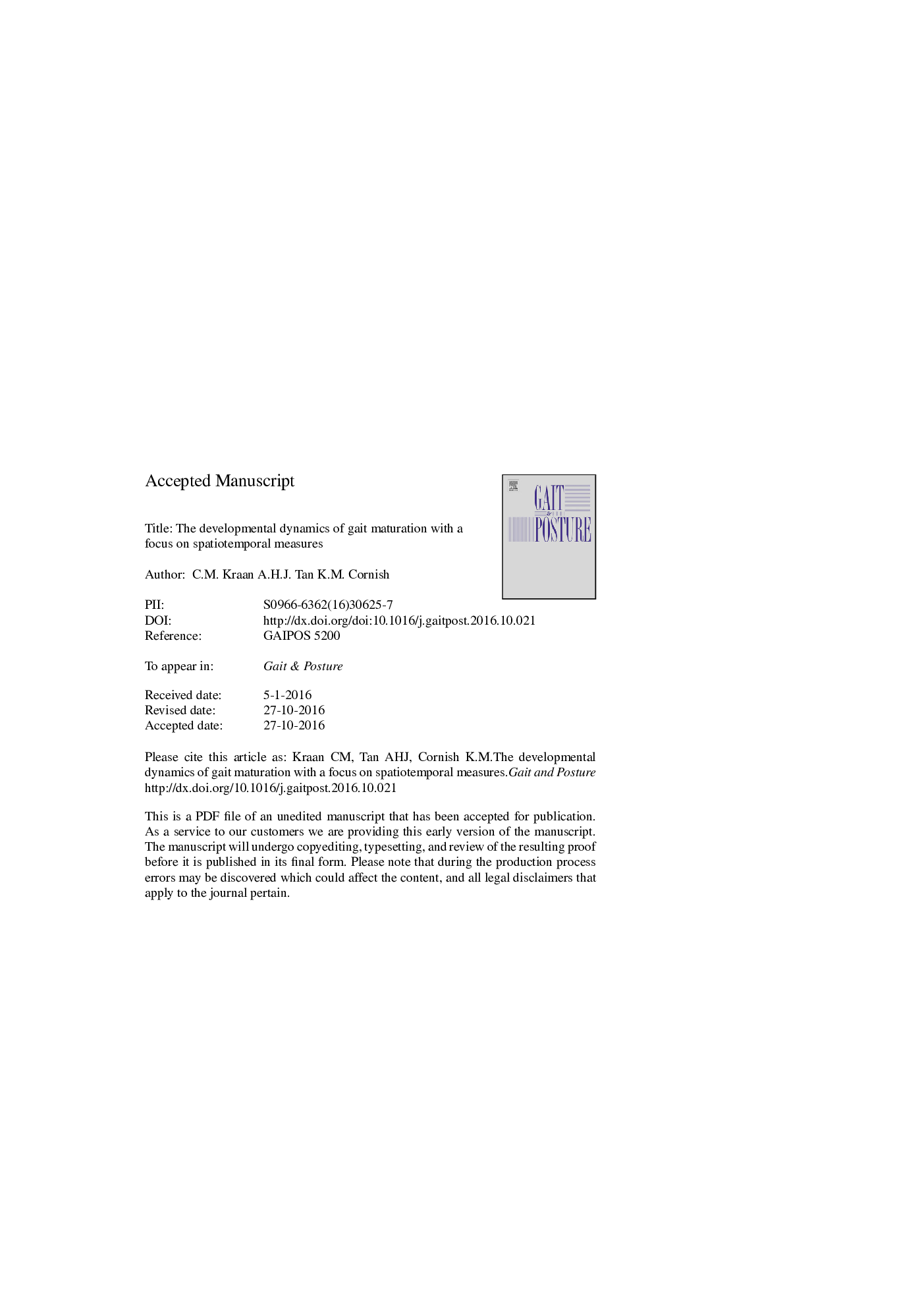| کد مقاله | کد نشریه | سال انتشار | مقاله انگلیسی | نسخه تمام متن |
|---|---|---|---|---|
| 8798700 | 1603844 | 2017 | 29 صفحه PDF | دانلود رایگان |
عنوان انگلیسی مقاله ISI
The developmental dynamics of gait maturation with a focus on spatiotemporal measures
ترجمه فارسی عنوان
پویایی رشد بلوغ قدم زنی با تمرکز بر اقدامات فضایی زمان
دانلود مقاله + سفارش ترجمه
دانلود مقاله ISI انگلیسی
رایگان برای ایرانیان
ترجمه چکیده
تحلیل غایات به عنوان ابزار بالینی قدرتمند برای مطالعه روابط بین کنترل موتور و عملکرد مغز شناخته شده است. با استفاده از ادبیات تحقیق در مورد راه رفتن افراد مبتلا به اختلالات عصبی، این بررسی بینش را به فرآیندهای عصبی کمک می کند و تنظیمات خاصی از پارامترهای زمان گذرا خاصی از راه رفتن و چگونگی آنها را در دوران زودرس تا دوران کودکی بالغ می کند. این بررسی همچنین نقش های تغییر ویژگی های انسان شناختی و بلوغ فرایندهای شناختی حسی و فراتر از آن را در تمایز مسیرهای توسعه ی زیرمجموعه راه رفتن بررسی می کند. مهمتر از همه، اگر چه مطالعات نشان داده اند که دخالت شناختی-راه رفتن در کودکان نسبت به بزرگسالان بزرگتر است، مکانیسم های شناختی کمک کننده ممکن است در میان گروه های سنی متفاوت باشد که دارای آسیب پذیری های متفاوتی هستند. این یافته ها به مدل های فعلی بلوغ قدم زنی با تأکید بر نیاز به یک مدل پویا که بر ادغام عوامل مختلفی است که باعث می شود تا تجربه و تمرین گام برداشته شود، پیوسته است. این برای مشخص کردن اینکه چرا گام و سایر نقص های حرکتی اغلب با اختلالات شناختی عصبی رشد می کند، ضروری است.
موضوعات مرتبط
علوم پزشکی و سلامت
پزشکی و دندانپزشکی
ارتوپدی، پزشکی ورزشی و توانبخشی
چکیده انگلیسی
Gait analysis is recognised as a powerful clinical tool for studying relationships between motor control and brain function. By drawing on the literature investigating gait in individuals with neurological disorders, this review provides insight into the neural processes that contribute to and regulate specific spatiotemporal sub-components of gait and how they may mature across early to late childhood. This review also discusses the roles of changing anthropomorphic characteristics, and maturing sensory and higher-order cognitive processes in differentiating the developmental trajectories of the sub-components of gait. Importantly, although studies have shown that cognitive-gait interference is larger in children compared to adults, the contributing neurocognitive mechanisms may vary across age groups who have different types of attentional or cognitive vulnerabilities. These findings have implications for current models of gait maturation by highlighting the need for a dynamic model that focuses on the integration of various factors that contribute to gait though experience and practice. This is essential to elucidating why gait and other motor deficits are often contiguous with cognitive neurodevelopmental disorders.
ناشر
Database: Elsevier - ScienceDirect (ساینس دایرکت)
Journal: Gait & Posture - Volume 51, January 2017, Pages 208-217
Journal: Gait & Posture - Volume 51, January 2017, Pages 208-217
نویسندگان
C.M. Kraan, A.H.J. Tan, K.M. Cornish,
